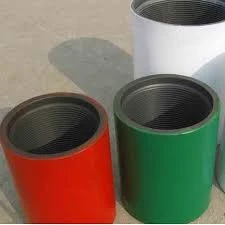- Afrikaans
- Albanian
- Amharic
- Arabic
- Armenian
- Azerbaijani
- Basque
- Belarusian
- Bengali
- Bosnian
- Bulgarian
- Catalan
- Cebuano
- Corsican
- Croatian
- Czech
- Danish
- Dutch
- English
- Esperanto
- Estonian
- Finnish
- French
- Frisian
- Galician
- Georgian
- German
- Greek
- Gujarati
- Haitian Creole
- hausa
- hawaiian
- Hebrew
- Hindi
- Miao
- Hungarian
- Icelandic
- igbo
- Indonesian
- irish
- Italian
- Japanese
- Javanese
- Kannada
- kazakh
- Khmer
- Rwandese
- Korean
- Kurdish
- Kyrgyz
- Lao
- Latin
- Latvian
- Lithuanian
- Luxembourgish
- Macedonian
- Malgashi
- Malay
- Malayalam
- Maltese
- Maori
- Marathi
- Mongolian
- Myanmar
- Nepali
- Norwegian
- Norwegian
- Occitan
- Pashto
- Persian
- Polish
- Portuguese
- Punjabi
- Romanian
- Russian
- Samoan
- Scottish Gaelic
- Serbian
- Sesotho
- Shona
- Sindhi
- Sinhala
- Slovak
- Slovenian
- Somali
- Spanish
- Sundanese
- Swahili
- Swedish
- Tagalog
- Tajik
- Tamil
- Tatar
- Telugu
- Thai
- Turkish
- Turkmen
- Ukrainian
- Urdu
- Uighur
- Uzbek
- Vietnamese
- Welsh
- Bantu
- Yiddish
- Yoruba
- Zulu
well tubing and casing
Understanding Well Tubing and Casing Essential Components of Oil and Gas Production
In the oil and gas industry, the extraction of hydrocarbons from underground reservoirs involves complex engineering processes and technology. Central to these processes are essential components known as well tubing and casing, which play pivotal roles in the safe and efficient production of oil and gas.
Well Casing The Foundation of Well Integrity
Well casing refers to the series of steel pipes that are inserted into the borehole after drilling to stabilize the well, prevent its collapse, and protect the surrounding environment from contamination. The casing is crucial for maintaining the integrity of the wellbore, especially in high-pressure and high-temperature conditions often encountered during oil and gas extraction.
Casing serves several primary functions. Firstly, it provides structural support to the well, ensuring that the walls of the borehole remain intact during drilling and production operations. Secondly, it isolates different underground formations, preventing the fluid from one layer from contaminating another. This is vital not only for maximizing production efficiency but also for ensuring that any oil, gas, or freshwater reservoirs remain uncontaminated.
Additionally, casing plays a protective role by providing a barrier that helps to mitigate risks associated with environmental contamination. By preventing unwanted fluids from migrating to the surface or into groundwater supplies, well casing is essential for complying with environmental regulations and safeguarding natural resources.
Well Tubing Facilitating Oil and Gas Flow
well tubing and casing

While casing is installed to cover the entire length of the wellbore, tubing is a smaller diameter pipe inserted into the casing. Once a well is completed, tubing is used to transport the oil or gas from the reservoir to the surface. Tubing facilitates the efficient flow of hydrocarbons, allowing operators to manage production rates and control the extraction process closely.
The design of tubing can vary based on the specific needs of the well, including factors such as the nature of the hydrocarbon being extracted, the depth of the well, and the overall pressure conditions. Tubing is typically made from high-strength materials to withstand the fatigue and stress experienced during production. Corrosion-resistant coatings or materials are often employed to enhance durability, especially in environments where corrosive substances may be present.
An important aspect of tubing design is its ability to accommodate artificial lift systems. In wells where natural pressure is insufficient to force oil or gas to the surface, various artificial lift methods—such as sucker rod pumps or electric submersible pumps—can be employed. Proper tubing design ensures that these systems function effectively and contributes to the overall efficiency of production.
The Interplay Between Casing and Tubing
The relationship between well casing and tubing is integral to the overall performance of an oil or gas well. While casing provides structural support and environmental protection, tubing is vital for production efficiency. The two systems must be designed and installed meticulously to ensure they work harmoniously, minimizing the risk of leaks or failures that could lead to costly downtimes or environmental hazards.
In conclusion, well tubing and casing are critical components in the oil and gas industry, each serving unique yet complementary functions that ensure the safe and efficient extraction of hydrocarbons. Operating under extreme conditions, these systems embody significant engineering achievements that underscore the importance of technological advancements in resource extraction. As the industry continues to evolve, focusing on enhancing the efficiency and sustainability of casing and tubing systems will be essential to meeting future energy demands while minimizing environmental impacts.
-
Well Casing Extension Couplings – Applications and InstallationNewsJun.06,2025
-
Types of Crossover Subs in Drilling & CompletionNewsJun.06,2025
-
Key Features of High-Quality Tubing Pup JointsNewsJun.06,2025
-
Installation and Maintenance Tips for Steel Couplings for PipeNewsJun.06,2025
-
How to Select the Right Pup Joint for Oil & Gas OperationsNewsJun.06,2025
-
Applications of Stainless Steel Pipe CouplingsNewsJun.06,2025







